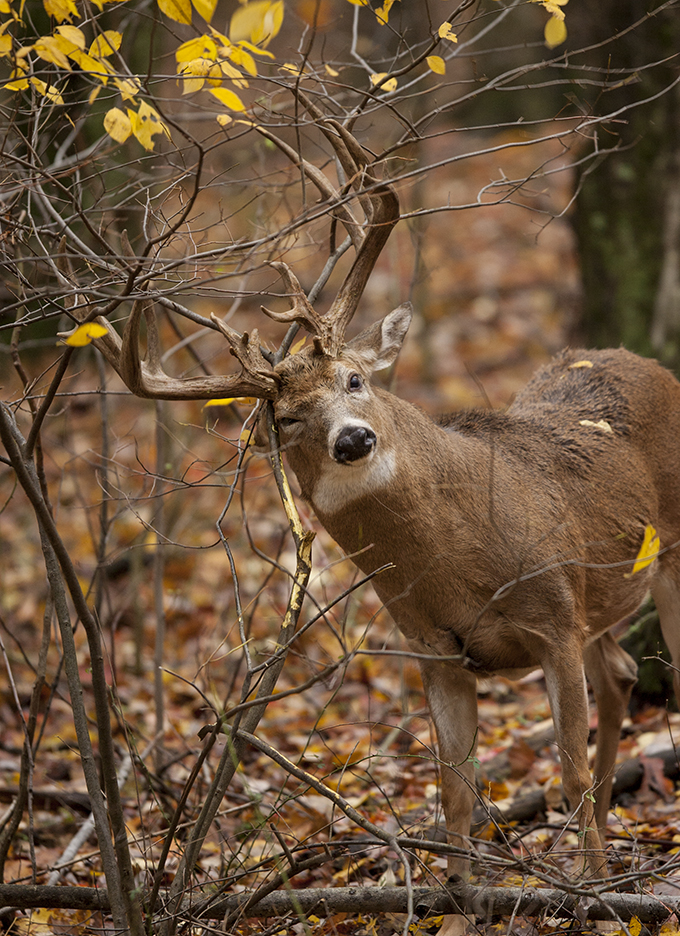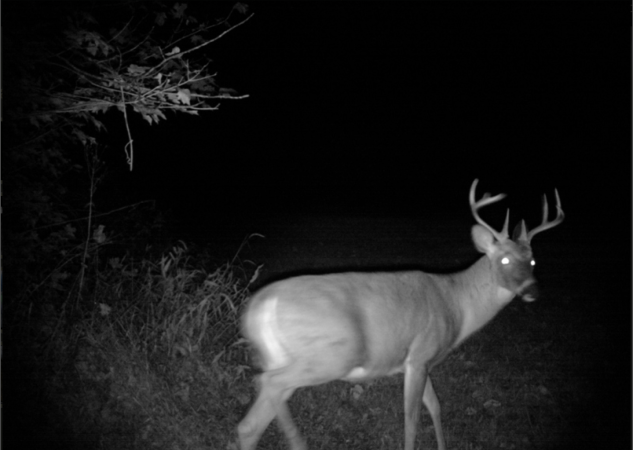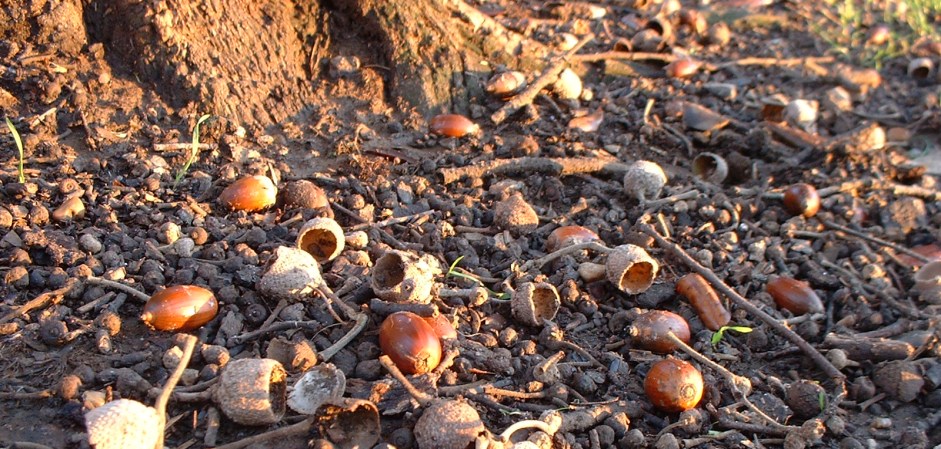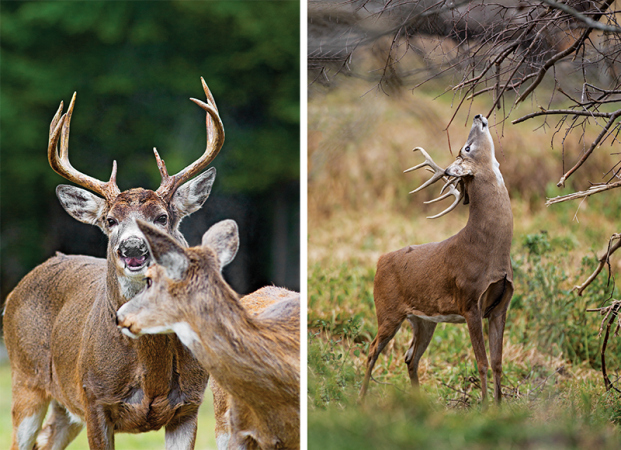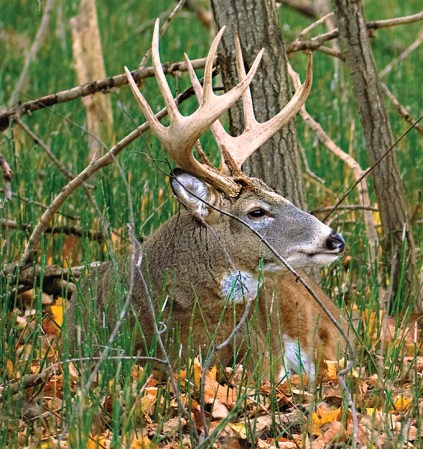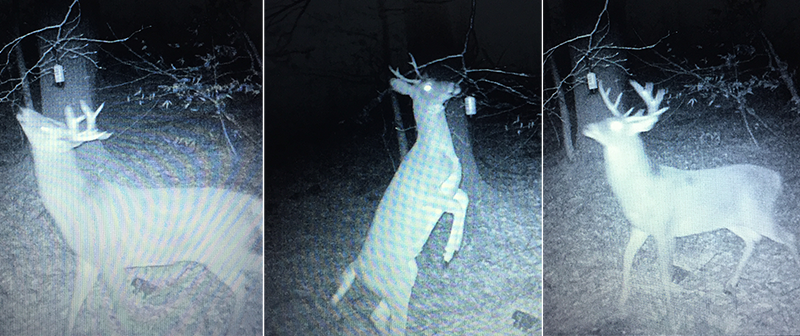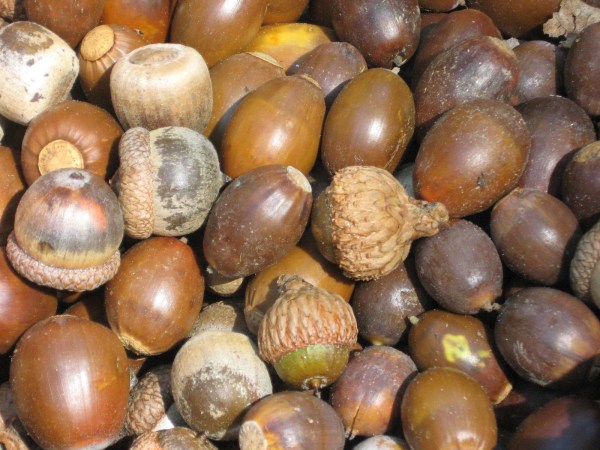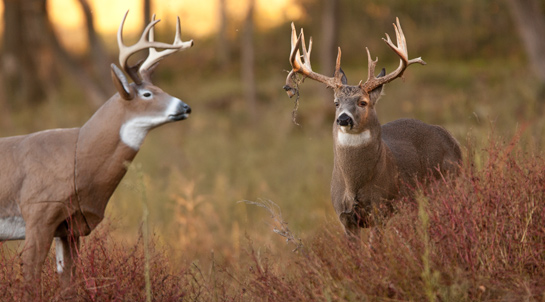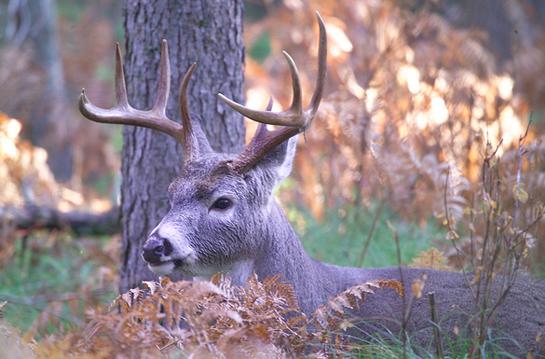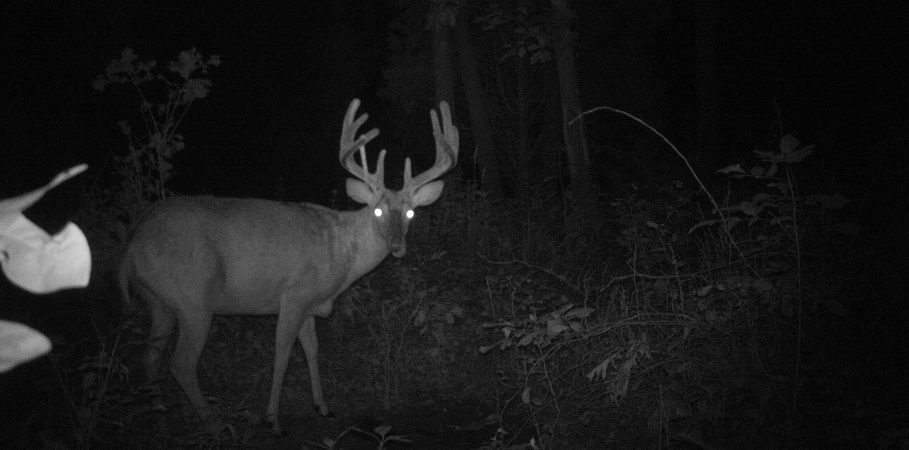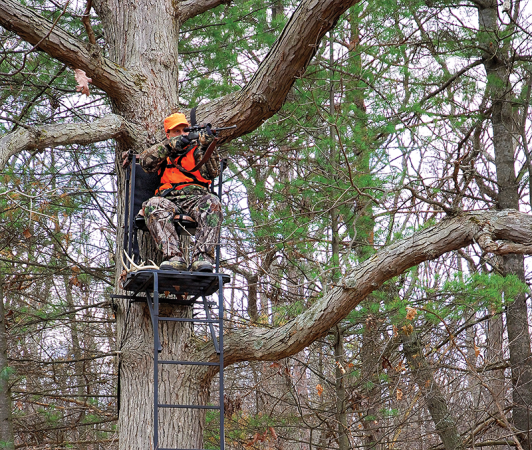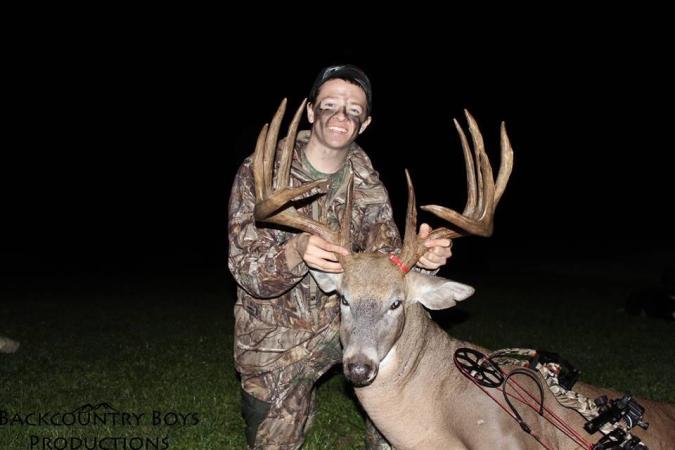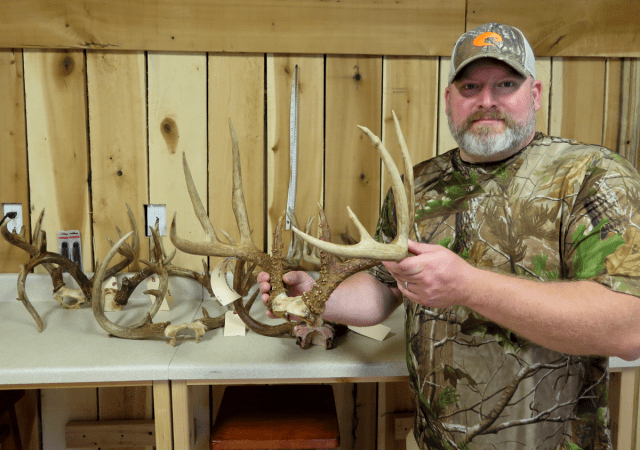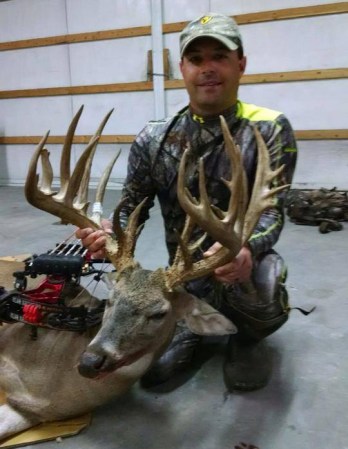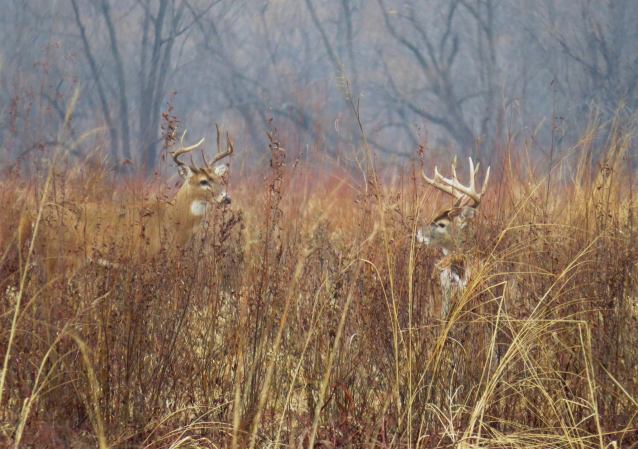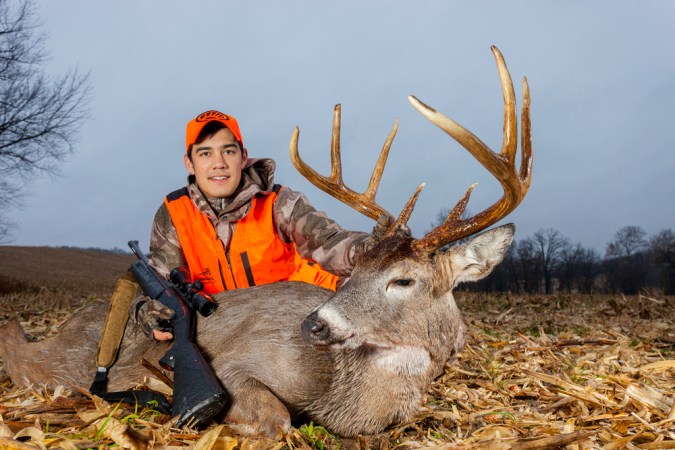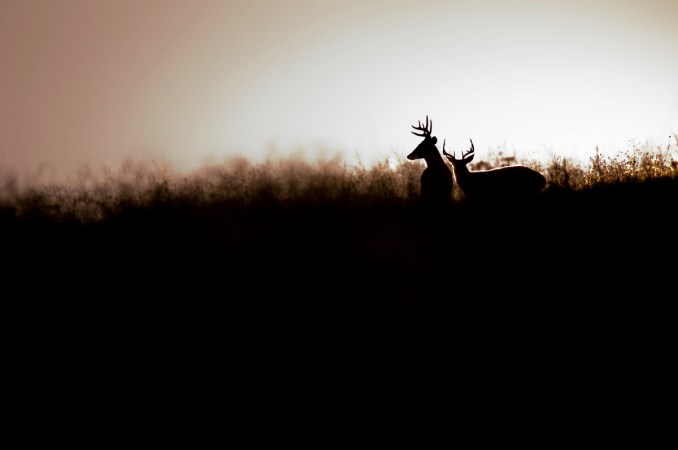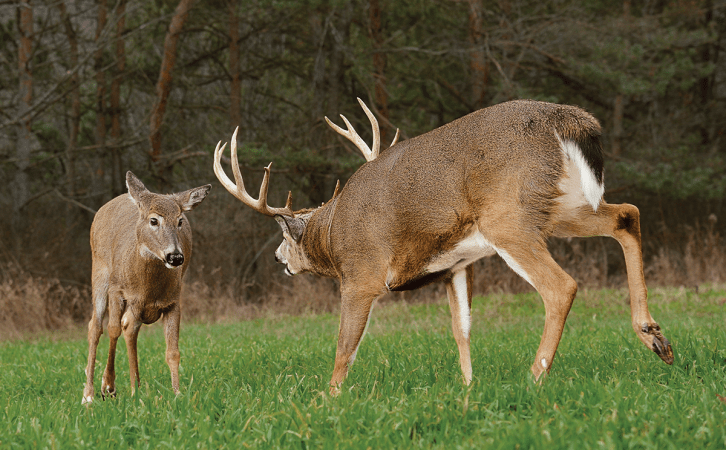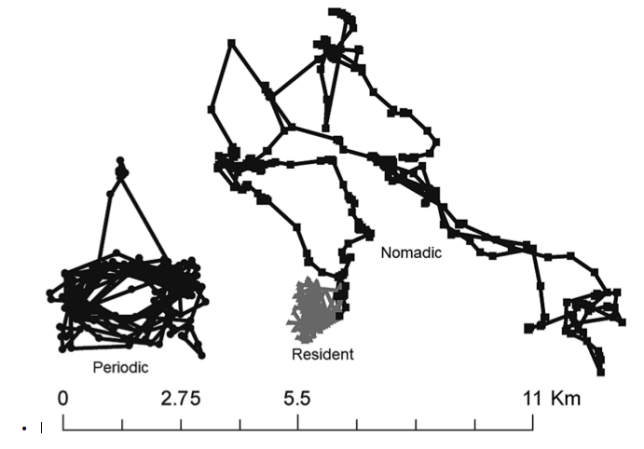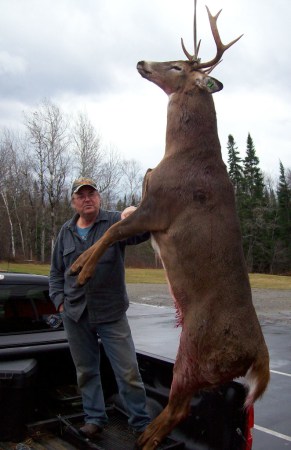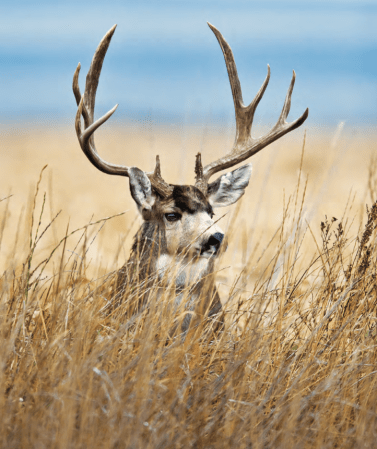Photos by Lance Krueger
The rut is coming. We know that much. Whitetails will gather and breed, bucks will relax their prodigious survival instincts, and the odds of seeing and killing deer tip toward hunters. But the rut rarely tracks with the calendar across the country, or even within individual states. Weather, crop harvests, hunting pressure, doe populations, and other localized factors also determine what the bucks are doing where you hunt.
So the time stamps on these clues will vary depending on where you hunt, but the progression of rut behaviors is consistent across whitetail country. Observe what’s happening around you, and update your tactics accordingly.
For more rut tactics, check out Secrets of the Rut.
Pre-Rut
Clue: Scrapes are freshly worked and filled with tracks. Nearby licking branches are
recently tended.
Action: Bucks are working hard to attract does, but the females aren’t ready yet. Set up along deer travel corridors, funnels, and pinch points to wait out bucks on the prowl. Put out a small-antlered, yearling buck decoy to irk a dominant buck into bristling up and delivering a thrashing to the upstart. Action could come any time, but morning and evenings are prime.
Intensifying Rut
Clue: Scrapes are frozen over and crusted or dry and inactive.
Action: Plenty of does are in estrus, so bucks no longer need to freshen their calling cards. Quit the scrape and rub lines and instead hunt where the does have moved—to food—with the expectation that bucks will soon join them. Set up on inside corners of food plots, harvested grainfields, still-green hay meadows, clear-cuts, or other feeding areas. Alternatively, hang a stand back in staging areas leading to the feed.
Heat of the Rut
Clue: You see (or hear reliable reports of) bucks out cruising at midday. You see road-killed deer on the way to work.
Action: What are you saving that sick day for anyway? Get out and hunt now—all day. Bucks cruise in broad daylight when their testosterone is at its peak. Place a portable ground blind on the edge of an open field or pasture, and set out a doe decoy that patrolling bucks can see from a distance.
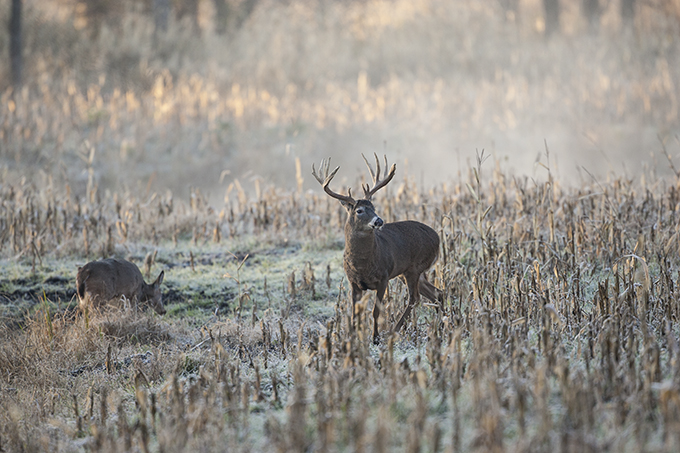
Rut Lockdown
Clue: Overall deer movement is disappointingly slow to nonexistent. Your friends say the rut
is over.
Action: Actually, the rut is in full swing. Does are hot and the bucks are with them in cover. You’re only seeing this year’s fawns and yearling does because mama is on a secluded date with a new beau. Some will call this hunting tactic taboo, but now is the time to set up at the edge—or even right in the middle—of whitetail bedroom thickets and hideaways. Be prepared to wait all day.
Redistribution
Clue: Farmers’ combines gobble up fields of corn, soybeans, and other grains, leaving swaths of golden stubble.
Action: In most places, the corn harvest continues into November. A freshly cut field is dynamite: For a day or two the whitetails find it hard to leave their once-perfect sanctuary. And bucks with estrous does love to mill about or bed in the safety of the big wide-open all day. But after a day or two, deer feel vulnerable and will leave open fields at daybreak.
Storm Front
Clue: The sun fades behind lowering clouds—a storm is coming.
Action: As nasty weather approaches, whitetails go on the move: Does and fawns feed hard to stoke up as the barometer drops, and bucks follow to shop the local singles scene. Hunt the highest-calorie, quickest-reward food sources available—grain stubble, food plots, hayfields, cutovers, and burns.
